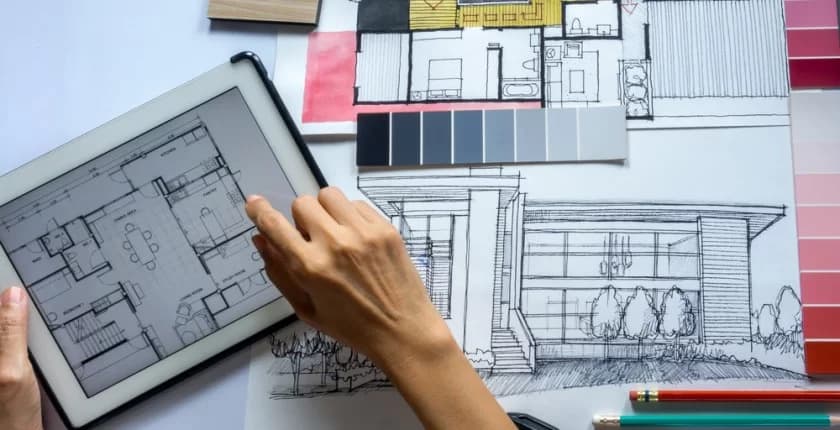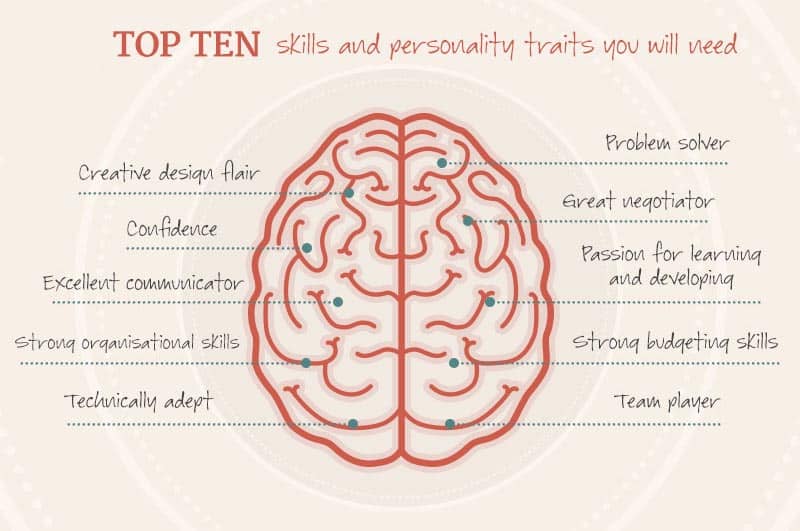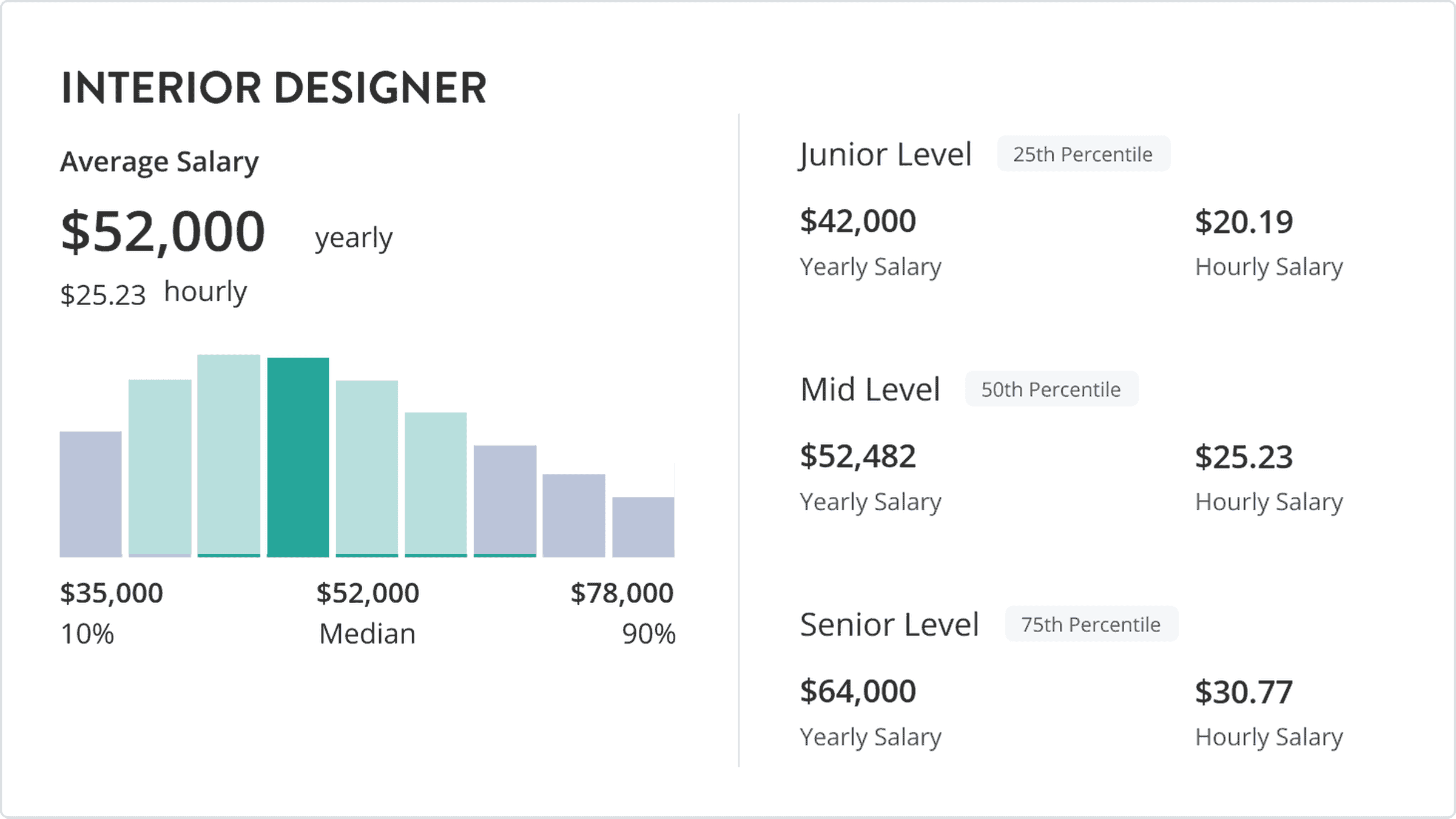Is it easy to answer the question, How to Become an Interior Designer? How much is an interior designer’s salary?
Interior designers can enhance the aesthetics and practicality of interior spaces and have an eye for color. These specialists are essential to the home building and remodeling sector, where they apply their inventiveness to enhance habitations and workplaces.
In this article, we cover how to become an interior designer, as well as the education and training needed for the position, pay rates, and employment prospects in the interior design industry.
Eduma – Education WordPress Theme
We provide an amazing WordPress theme with fast and responsive designs. Let’s find out!
What is an Interior Designer?
An interior designer is a housing industry professional who works to improve the aesthetics of rooms and other interior spaces. Interior designers are solely concerned with beautifying and improving the functionality of living and working spaces.
What exactly is an Interior Designer’s job?
Interior designers direct efforts to make interior spaces functional, aesthetically pleasing, and cohesive. They select and arrange decor, as well as make decisions about interior lighting and furniture.
Interior designers understand their client’s needs and work with them to realize their vision for a space, whether it’s a personal room or a corporate space.
The following are the essential responsibilities of an interior designer:
- Discussion with clients to confirm their wants and needs
- Estimated labor and material costs
- Developing project budgets
- Developing project timelines
- Designing sample designs
- Choosing furniture, paint colors, and other materials
- Purchasing administration
- Supervising furniture and other design elements installation

7 Steps for How to Become an Interior Designer
The path to becoming an interior designer entails formal education, on-the-job training, and professional certifications. The following steps will assist you in becoming an interior designer:
1. Understand the profession to Become an Interior Designer
Before you begin, you must first understand the profession and what it entails. You should, for example, understand the distinction between interior design and interior decoration. Interior decoration is primarily concerned with improving a space’s aesthetic quality.
Furniture and other decor can be used by an interior designer to beautify the space.
On the other hand, interior designers create spaces from the ground up, focusing heavily on a room’s architectural and structural elements.
2. Complete your education to Become an Interior Designer
Interior designers, unlike interior designers, can work without a degree. Earning a degree or professional certification in interior decoration, on the other hand, increases your value in the eyes of employers and demonstrates that you understand the fundamentals of the field.
It is best to choose interior decoration programs that are accredited by professional organizations. Certified Interior Designers International (CID) and the Interior Design Society are two examples (IDS).
3. Gain Experience to Become an Interior Designer
It is not possible to become a master interior designer overnight. Rather, you must gain experience to hone your design skills. Beginner interior designers can practice in their own homes before moving on to the homes of friends and family. Doing these free jobs will allow you to make and learn from mistakes while also improving your expertise.
Another option for gaining practical experience is to apprentice under an expert designer. Having the advice and supervision of an experienced professional is also an excellent way to improve your own abilities.
4. Build a portfolio to Become an Interior Designer
It is critical to create a portfolio of your best work if you want to work as an interior designer. Physical portfolios are common, but the convenience and professionalism of having a well-designed online portfolio to share with prospective clients cannot be overstated.
If you lack web development experience or the funds to hire a developer, you can instead use social media sites. Instagram and other image-focused sites are great places to showcase your work.
Paid experience is not required when putting together a portfolio. If it’s well-photographed, even casual or hobby work done for friends and family can be included in a portfolio.
5. Create a network to Become an Interior Designer
It is critical to create a portfolio of your best work if you want to work as an interior designer. Physical portfolios are common, but the convenience and professionalism of having a well-designed online portfolio to share with prospective clients cannot be overstated.
If you lack web development experience or the funds to hire a developer, you can instead use social media sites. Instagram and other image-focused sites are great places to showcase your work.
Paid experience is not required when putting together a portfolio. If it’s well-photographed, even casual or hobby work done for friends and family can be included in a portfolio.
6. Improve your skills to Become an Interior Designer

There’s more to becoming an interior designer than just passing a test. A good interior designer should be constantly working to improve their skills (for example, in drawing or computer-aided design), as well as knowledgeable about industry trends.
A strong skill set allows you to better visualize a client’s goals, and current knowledge of interior decorating trends allows you to present your clients with the best options for their space. Staying current can be accomplished by attending trade shows, reading industry magazines, and following industry leaders.
7. Be a part of professional organizations to Become an Interior Designer
Professional organizations can provide ongoing career development training.
The Interior Design Society (IDS) and Certified Designers International (CDI) are the most prominent organizations for interior designers, and it is recommended that new designers join one of these organizations.
Both the IDS and the CDI provide opportunities for network development and certification. Membership in these organizations also makes it easier to keep up with the latest industry developments.
What qualifications are required to work as an Interior Designer?
The following abilities are required for excellent interior decoration projects:
Computer-aided Design (CAD) to Become an Interior Designer
While computer-aided design (CAD) skills are more important for interior designers, interior designers can benefit from using CAD to visualize projects for clients.
Exceptional Sense of Design to Become an Interior Designer
You must be able to look at a space and plan ways to improve its appearance as an interior designer. For example, you must determine whether a change in the fabric can improve the feel of a room or whether an office space’s furniture needs to be rearranged to meet the client’s objectives. Understanding how to improve an existing design to increase its appeal is essential in interior decoration.
Interpersonal Skills to Become an Interior Designer
Interior designers must be able to think critically. You’ll be spending a lot of time working with your client to understand their needs and goals for a space, so patience and understanding will come in handy. When dealing with suppliers, interior designers, and builders, interpersonal skills are also essential.
Financial and budgeting skills to Become an Interior Designer
An interior designer’s job includes developing and adhering to a budget for their projects. As a result, cost estimation and budgeting abilities are required. Careful financial management is required to ensure that a project does not exceed the budget established by your client.
How Much Does an Interior Designer Make on Average?

How much is interior designer salary? In the United States, interior designers earn about $26.10 per hour. We estimate that an interior designer in the United States earns $55,827 per year on average, based on a 40-hour work week. Individual earnings, however, will vary depending on experience, location, client, qualifications, and marketing expertise.
What options are available for Interior Designers?
The United States Bureau of Labor Statistics (BLS) is the authoritative source for occupational data in the United States. Because the BLS does not have a separate entry for interior designers, it is impossible to cite official job growth statistics. Instead, we’ll look at the job outlook for interior design, as the BLS description of the field closely overlaps with that of interior decorating.
The BLS predicts a 5% decline in the interior design sector between 2019 and 2029. The trend is likely to have an impact on interior design and other related professions. According to the BLS, the art and design field is expected to decline by 4%. Improving your skills will increase your chances of landing interior design jobs. As the industry becomes more competitive, your ability to network and sell yourself will become more important.
Read More: How Much Do Graphic Designers Make: Guide & Tips for Salary
Contact US | ThimPress:
Website: https://thimpress.com/
Fanpage: https://www.facebook.com/ThimPress
YouTube: https://www.youtube.com/c/ThimPressDesign
Twitter (X): https://twitter.com/thimpress


